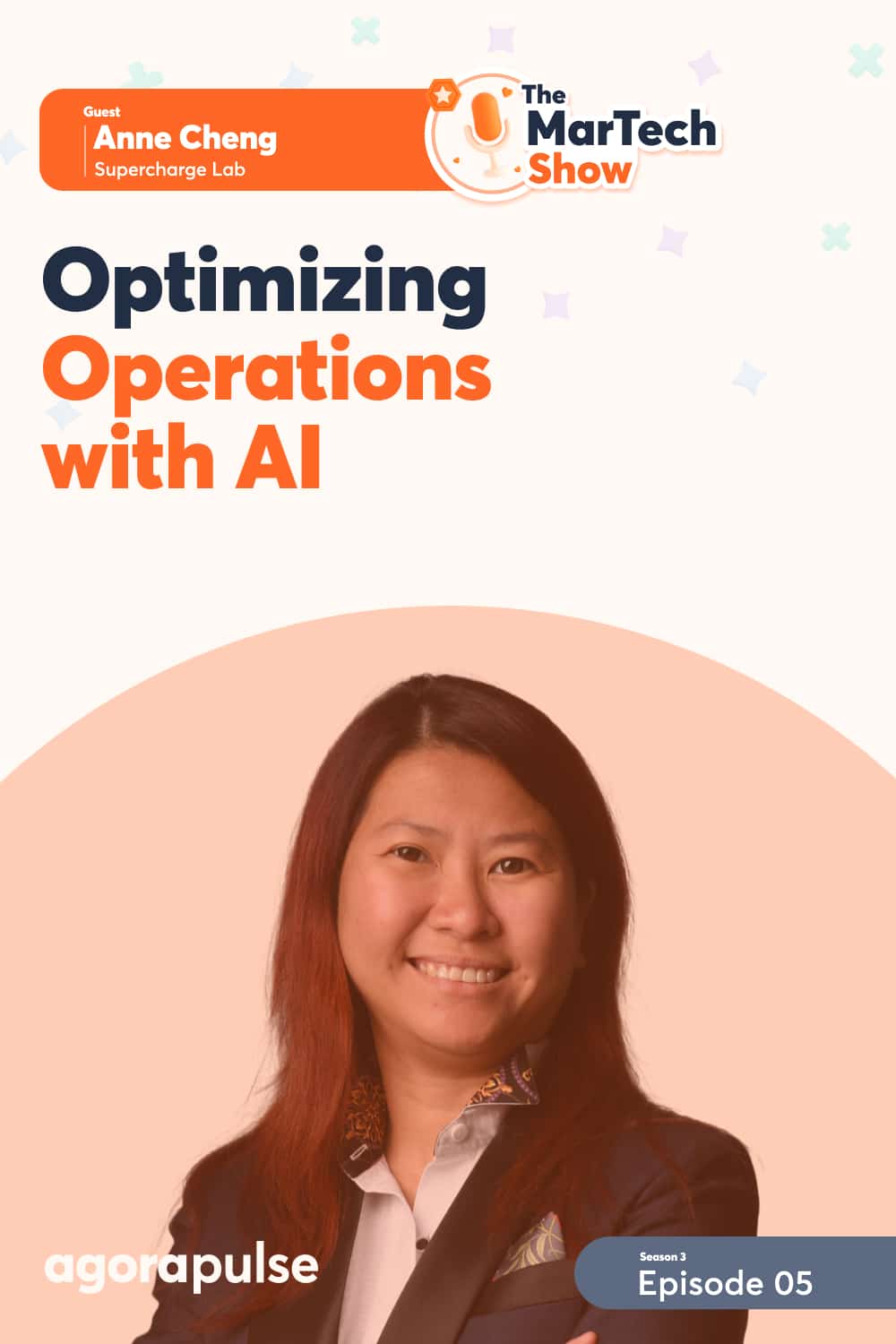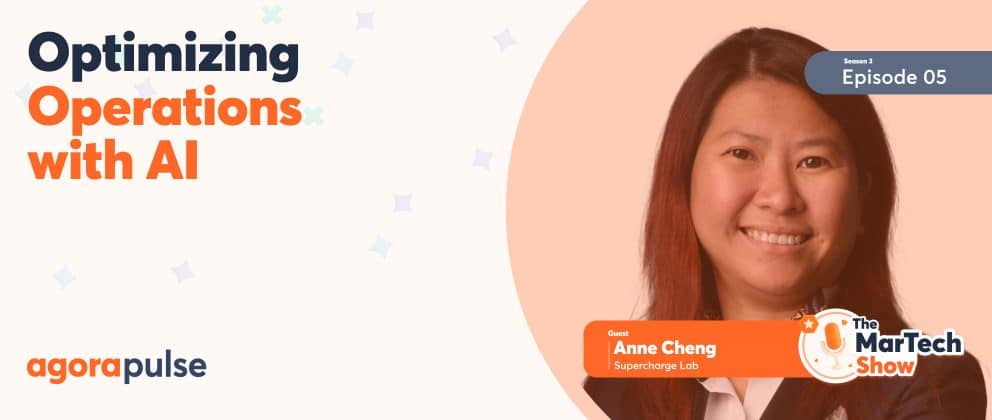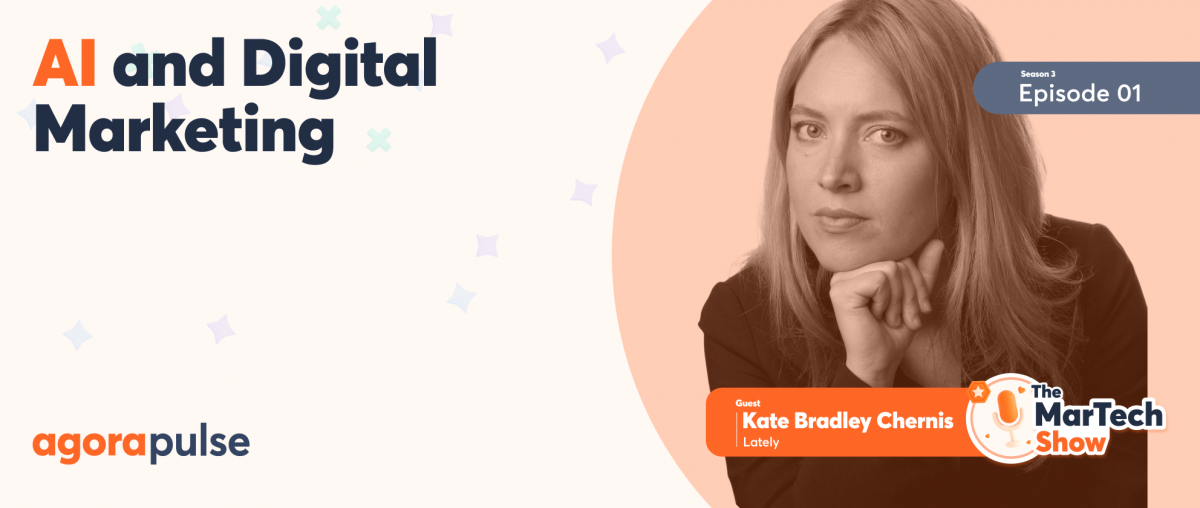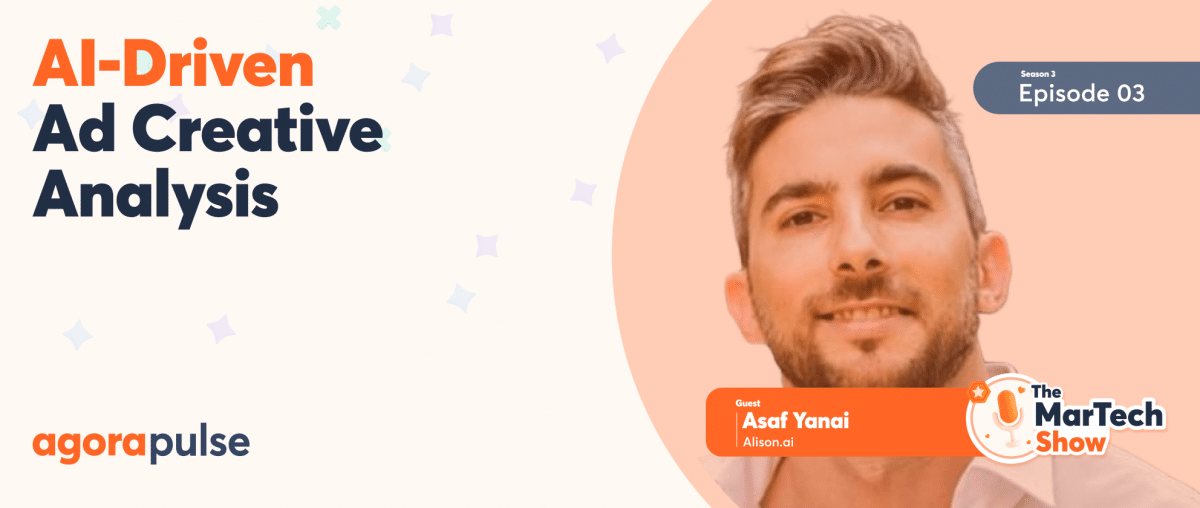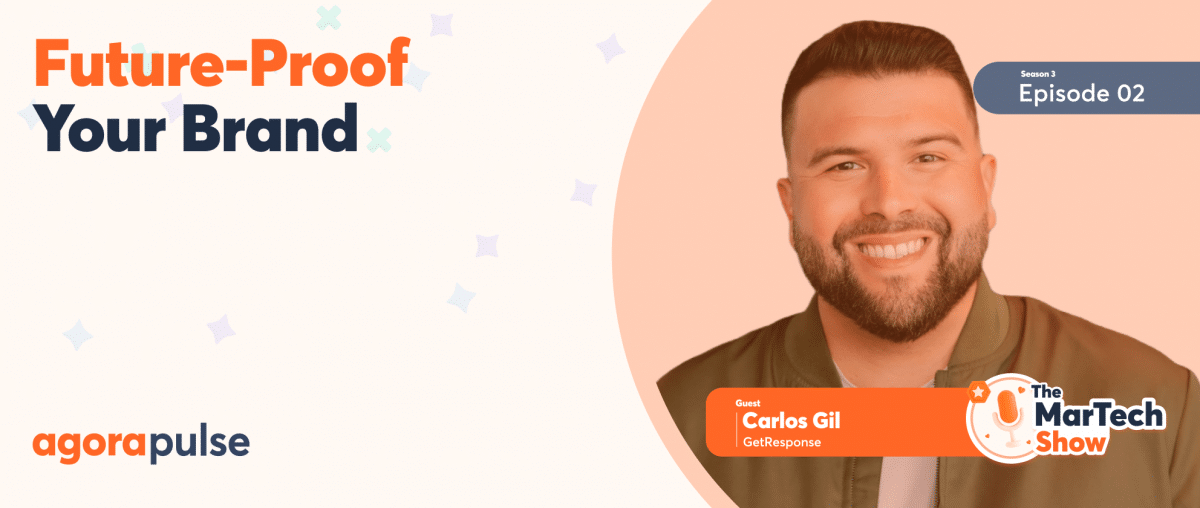What if you could revolutionize your digital agency’s operations with the latest cutting-edge technology?
Agencies today face the challenge of managing complex workflows while maintaining efficiency and trying to deliver high-quality results for clients. Traditional methods often prove inadequate in handling the increasing demands of clients, as well as the dynamic nature of our digital marketing world and inefficient workflows. Those lead to bottlenecks, resource waste, and subpar client experiences. Agencies can struggle to keep up with the fast-paced digital landscape, resulting in missed opportunities and declining competitiveness.
And that’s what we’re covering today’s episode of the Martech Show.
Mike Allton: Welcome back to the MarTech Show, where Robin and I get to dish on what’s shiny and new in the MarTech space and then do a deep dive into a specific platform or solution that can help you and your business today.
[Listen below to the full episode or read on for the transcript.]
Canva Acquires Leonardo.ai
Mike Allton: Some huge news within both the AI and the digital marketing space: Australian tech darling Canva has announced its acquisition of Leonardo.ai. Leonardo is awesome. The Australian startup also has been one of the more popular image and video generation platforms, boasting nearly 20 million registered users.
By comparison, Canva has over 190 million active users, of which 16 million are paid. And that’s just the latest in a series of acquisitions by Canva, including Affinity, Flourish, and Smart Mockups, all designed to help establish Canva as that all-in-one solution or hub for creatives, as well as help it move up the market.
Robin, what do you think of this news?
Robin Dimond: Okay, first of all, let’s applaud Canva once again for doing this. The things that are coming out of Australia—I mean, incredible at this moment. I want to applaud them.
I think the news was really exciting, but I want to play devil’s advocate here, Mike, and I hope you’re ready to play too. Them adopting this whole AI system leaves me to wonder if you didn’t notice 30 percent of CMOs brought things in-house, and they’re starting to leverage AI. Canva is encouraging this, which is great.
But when do we move from a creation to a curator?
I think that’s really what we’re seeing right now. And so, I have some fears. I think it’s great. It’s going to be great, but are all of our images going to look the same? Is every social media post going to look the same because of what Canva has been able to help us do?
Mike Allton: Yeah, I don’t know. One of my concerns was more for the creator economy that’s evolved around Canva.
If you go into Canva today—maybe some of you listening [or reading] or watching haven’t used Canva a lot, if you go to use an image from Canva’s library, there are tons of images there. A lot of them are premium images where either you pay a buck (or you get it for free if you’re part of Canva’s paid subscription service), but it’s not Canva that’s building out those images or creating all the other graphics anymore. They’re using creators like Donna Moritz, a friend of Agorapulse. That’s her entire business now. It’s been revolutionized. She’s creating templates and images for Canva. And if I can go into Canva and simply say, “Create for me an image that looks like X, Y, and Z from a prompt,” rather than trying to pick through all the available stock photography that might put a dent in that creator economy, as well, I think.
Robin Dimond: And that’s the one thing that we have to look at: creator versus curator. It’s great to have both, but at what point are we just going to be curators of the same images?
And so I think, as this is very exciting news, I think the CMOs—I’m talking to the CMOs out there, the VPs of marketing—you know, don’t get rid of your creative team. Allow them to leverage this. But don’t replace it because that’s actually what they’re saying: that they think this will replace people, and we keep talking about [how] it’s not supposed to. It’s supposed to leverage it.
I am a little worried about the creator economy. I’m interested to see what happens. Are we going to have a flip in two years? Should we mark this? And then two years from now, come back and see, “Oh my gosh, we had to bring back creators because there was this emptiness, and look at the movie WALL-E. If we need to look back on creator versus curator, there might be just spitting images of the same thing.
It’s unnerving but exciting at the same time. I’m not sure how to feel.
Mike Allton: So those of you watching, listening, reading, let us know in the comments: A. Are you a Canva user? We’d love to know that. And B. Are you excited, are you apprehensive, or are you just on the fence about this AI acquisition?
Anne Cheng of Supercharge Lab
Imagine if you could transform your digital agency’s operations with the latest tech tools. That might sound pretty great, right? A lot of digital agencies today might struggle with managing complex workflows and keeping everything running smoothly. And, let’s face it, traditional methods just don’t cut it anymore. Those inefficiencies can lead to headaches, wasted resources, and ultimately unhappy clients.
In this fast-paced digital world, we need you. You can’t afford to miss a beat.
So today, we’ve got a special treat for you. We’re talking to Anne Cheng, the award-winning CEO of Supercharge Lab. She’s going to share how your digital agency can use AI and machine learning to streamline operations, optimize workflows, and offer more personalized services. With Anne’s extensive experience in transforming businesses, she’s got some incredible insights that can help you up your game. Hey, Anne, welcome to the show.
Can you start by just telling us a little bit more about Supercharge Lab and the kind of work that you guys do there?
Anne Cheng: Supercharge Lab was started way before the whole ChatGPT revolution. When we first started, I was very obsessed with thinking, “How can I get inside the minds of my clients?” I needed them to make a transaction to sell. I needed them to buy. I needed to sell to them.
And so I said to myself, “What if I could understand how they think?” So while doing a lot of research about buyer behavior, I started Supercharge Lab because I had a lot of data, and I realized that after 18 years of running businesses, I’ve recognized that the biggest problem about running a business is that there’s this administrative overwhelm.
There’s a sea and a tsunami of operational workflows, which are very painful. I also worked in the financial industry as a person in operations, and using that experience, I realized that a lot of things could be done by machines rather than humans. They become more consistent. They became more trustworthy and reliable, and so that’s when I started Supercharge Lab.
The first solution we had was Sigmund AI, and that was a solution that started to revolutionize workflows for, agencies. Then the ChatGPT revolution came out, and everybody who says marketing technology today thinks, “Oh, you’re just doing generative AI.”
But the truth is, we started by looking at analytics. We looked at data about “How do I understand workflows?” and “How do I make workflows?” whether it was the sales process, whether it was the business development process, [or] whether it was the finance or customer engagement process. How do I optimize that? In the years that followed, we were able to launch several other solutions to help optimize workflows across multiple industries. So that’s what Supercharge Lab does, in a nutshell.
Robin Dimond: Love that. That’s super exciting.
What inspired you to focus on integrating these advanced technologies into a digital agency workflow? What was your inspiration?
Anne Cheng: I saw at the top of this decade, in 2020, a lot of the barriers to entry in digital marketing were so low, right?
You get a guy who’s working for $6 an hour in the Philippines who is running your creative or doing social media marketing, but as much as there was so much competition, the quality of output was incredibly low. Customers and clients started getting more and more demanding, given the whole ChatGPT revolution, the mid-journey revolution, and the Canva revolution.
And so I guess that’s where I started saying, “Hey, what can I do to help provide some assistance to the digital marketing economy?” and saying, “How do we optimize operational workflows to help people do what they do best?” Whether it was in the creative, in the strategic side of things, not spending hours upon hours pouring over data or figuring out, “Have you built that client? Have we followed up with this VP of Marketing?” As we all know a lot of client-side, they’re all bringing marketing in-house. How do we stay competitive as agencies? So that’s the inspiration, and that’s the impetus for us to launch multiple products across optimizing operational workflows.
Mike Allton: And that data analysis is key. It’s just so challenging for agencies to truly get into the data and have those kinds of questions answered.
And I’m glad that you made the distinction earlier between generative AI and the kind of AI applications that you’re doing today.
Could you explain a little bit more about AI and machine learning and how they’re able to streamline operations for agencies?
Anne Cheng: I think we started with this thing called RPA (Robotic Process Automation). RPA is the process of automating whatever could be automated through your SOPs, your standard operating procedures.
Take, for example: We know that the sales process starts with prospecting, then it goes into account nurturing, and it goes into understanding, having a discovery meeting, and so on, right?
If you understand the components of every operational workflow, you can optimize and set reminders. So, there are AI assistants who can do that. You don’t need reminders. You can program automation to do everything for you so that you can free up a lot of, the memory space in our brains, our human brains, to focus on the human connection, right? It’s leveraging AI, machine learning, and automation—and then as you go along, you collect data on what works and what doesn’t work. You then start to optimize the processes, the RPAs.
That’s where AI and machine learning come in. So we’ve seen things like performance tracking. We’ve seen contract management, finance, customer engagement, customer communication, and, well, even creative strategies, coming out of workflows by understanding where the client is in their life cycle, as well as what is the competitive landscape.
Robin Dimond: That’s so helpful nowadays.
Can you share with us a little bit more about the specific technologies or tools that digital agencies can implement to help optimize? Which ones would you suggest immediately?
Anne Cheng: The first thing I would do is go into a digital audit with a client. Oftentimes clients fall on either end of the spectrum right there. Either I don’t know anything about digital marketing, or I know everything about digital marketing. Oftentimes you don’t see anybody in between.
So for the people who don’t know very much, a digital audit will be able to at least inform you of where you stand against your top five competitors.
- What are they doing? What are their strategies?
- It also tells you the analytics that you’re getting, what your key metrics are, if they are real, and if they are optimal in the marketplace.
There are a lot of other things that you can do with a digital audit. For those who think they know what they know, the digital audit does give them a clear indicator of whether what they know is truly what is out there.
- What does the data say? What does Google say? What do your competitors say?
- Do you know the signs that indicate that your competitors are switching their strategy? Why is that?
So, we do a lot of digital audits for large organizations, and that starts the conversation, then by understanding the client’s position, their objectives, their strategies, as compared to their competitors, as compared to the macro environment.
- What is Google moving towards? Or where are your customers operating?
That would be another thing that we would do to assess and recommend strategies. And it’s completely automated based on the data.
Mike Allton: And we did something like that with you, with Agorapulse, where you worked with one of our former communications managers and developed an entire understanding of the personalities and geographies and all the different details of our aggregate audience.
How do we take it down, though, to the individual? How do some of these technologies help with personalization, for clients and their audiences?
Anne Cheng: Personalization—whether it’s for the audience, whether it’s for the client—there are two sets of audiences that I would speak to here.
- Firstly for the clients, the corporates, or the brands who want to get a personalized or very specific strategy: As I mentioned, by determining where they are in their life cycle, who are they trying to target? Understanding the competitive forces and understanding what the current strategies are and where the audience strategies should be. That’s what we do. We try to personalize the strategy.
- But going down to the personalization of communications for the audiences, that’s very fascinating because if you’ve worked in a brand and you have multiple target audiences, you need to be very specific about how you conduct your marketing and your outreach and engagement to these audience groups. And so that’s a lot of data that you have to take in by yourself, analyze, and then structure your creative, your strategy. Even an agency will tell you that it’s going to take months to come up with the strategy because if you have multiple audience groups, it’s going to be a lot of work. Today with artificial intelligence, these strategies can take one or two days for us to brush up on our strategy and help you implement it. It can also auto-detect performance. It can analyze the performance. It can implement the performance against multiple algorithms by Big Tech. It helps you to shift between AB testing to multivariate testing, to value-based bidding autonomously.
I think that’s where the personalization of communication and engagement to customers comes in.
Can you share with us a case study or examples of how some of these technologies and techniques have been used specifically to help agencies with their workflows, client outcomes, and those kinds of things?
Anne Cheng: Absolutely.
This is a client who I’m still currently engaged with. And let’s just say that it comes from an industry that is what we call “big evil corporate,” right? So they are in the energy industry. And, well, they want to be hip, they want to be cool, they want to engage their audiences, but their audiences hate them, and the number-one search term was, for this particular client, “gas station near me,” so I guess you know what kind of corporate we’re talking about.
What we did was start with the digital audit. We discovered that the audience that they were trying to target enjoyed funny commercials. And they would scroll YouTube for commercials that were tear-jerking, best commercials made in the last five years, they’ll watch it on repeat And so, it’s pretty interesting. We got them to do a lot of TikTok videos and other types of YouTube videos with a sense of humor about a serious subject, right?
That was one thing that we discovered from our digital audit. We were able to do the analytics, and strangely enough, the one campaign that started to gain a lot of traction was doing recruitment videos, funny, irreverent recruitment videos, and commercials.
So we started doubling down on employer branding for them and—well, we aren’t an agency, but we worked with the agency and the in-house marketing team. We realized that this brand started gaining a lot of authority as a responsible company because they were conducting a lot more interviews with the target audience. Also, they were able to relate on the audience’s level as funny and irreverent but still socially responsible.
That’s a pretty interesting case study, but in doing this, we were able to also optimize their HR operations, which is random as opposed to just marketing operations.
Robin Dimond: The big question is …
What are the challenges that digital agencies have when implementing AI or machine learning? And how do they overcome it?
Because all we hear is pushback, pushback, pushback. How do you know what the challenges are, and then how do you help them overcome those?
Anne Cheng: I think it’s a very pertinent question, right?
So, it’s the same across every industry when you say, “What are the challenges of adopting AI?”
- Firstly, it’s the people who have money who actually can adopt AI. Artificial intelligence, If you want to build optimal workflows, you won’t see the investment or the ROI immediately. You’ll see the ROI come a little bit later.
- The first thing is the financial investment. It’s very important to adopt artificial intelligence. If your clients are talking about it, and you don’t know what your clients are talking about, you’re going to get caught, right? If you’re dealing with clients who are speaking that language, and you have no idea what they’re talking about, you have to know the infrastructure. So the first thing is financial investment.
- The second thing is time investment, because you need to go at it with a long-term view. But more important is the education. Education cannot come from top-down as well. Right? I’ve seen so many companies where the CMO or the CEO says, “We’re going to adopt AI, we’re going to hire a chief digital officer or chief AI officer,” and everybody is not willing to change the way they work.
I think those are some major challenges.
Another thing that I’ve seen in the market is that large organizations who have the money to invest in AI adoption do so in the wrong way. What do they do? They start small. In the tech space, we call this, we’ll do a single POC, and then, yay, it’s successful. And they stop there and they say, “I’ve adopted AI, right?” And so you see retail banks have a chatbot, and then everything else in the business has no technology. They’re writing on pens and paper, and the files are thicker than the walls.
That’s one of the problems: there’s a very disparate adoption of artificial intelligence, even technology across the same company across different groups.
I think these are some challenges that people need to be really, really aware of.
Mike Allton: I love your point about the need for people to become educated.
Robin and I have been nodding and laughing throughout. Those were great points—particularly, like I was saying, the need for marketers to just understand AI [and] be able to implement it.
That’s why I had a whole other show, AI and Marketing Unpacked, as much to help other marketers as myself understand what RAG is and all these other terms and technologies that are coming to the fore today.
But I also know one of the pushbacks we see from agencies is “No, no, no, no. I need my people to be creative. I can’t rely on AI that’s going to generate—to your point at the start of the show, Robin—images [that will] look like everybody else.”
How do you see some of this integration of technology impacting creativity, and innovation, particularly within agencies?
Anne Cheng: That’s the thing, right?
In agencies or any business, innovation and creativity come from human beings. The internet is the tool.
Remember the days when Yahoo was the search engine or the tabloid engine of the world at that point? They said nobody’s going to look in the library anymore. I mean, nobody’s going to read anymore. And similarly, when the iPhone came out, people were saying, “People are going to get lazy.” And it’s true.
Artificial intelligence is just another technology where people are using it.
Today, they’re outsourcing the difficult stuff and the easy stuff to technology. And that boils down to: Are you hiring the right people? Are you engaging your people the right way in your organization? Are you engaging your employees or your teams to ensure that they learn in a very engaged manner?
- We use artificial intelligence across every part of organizations, not just agencies. But we’re not just talking about your creative strategy coming from Gen AI. But did you read it?
- Some of you might know that I teach in a couple of colleges, and a lot of academics were coming to me and bemoaning ChatGPT because all the thesis and submissions and projects were being written by ChatGPT, but the truth is I asked them, “Then have you asked your students to defend what they’re saying, defend their projects, present their projects?” I pit my students against each other.
- If you write your business plans with ChatGPT, all your classmates are going to ask you questions about your business plan because if they can tear you down, they will rank higher than you. So can you defend it?
- We can get creative as well in the way that we allow creativity to flourish in our organizations. Yes, we can use ChatGPT. Yes, we can use Canva. Yes, we can use MidJourney, but at the end of the day, can you challenge or engage the people within the organization creatively to ensure that they’re very proud of their work? I don’t think anybody would be extremely proud of their image looking ghastly or not aligned with the client’s brand.
Robin Dimond: I feel like this is a breath of fresh air, and your emotional intelligence for this is amazing. I love that you say engage. I just remember going to college pre-interwebs, and having all of that and—I have to date myself—going to the library, and then all of a sudden it was there and available, and it was this huge issue.
And then we started integrating. It just keeps evolving. And we have to think of creative ways. I love how you challenge those students and for them to defend it.
With that being said, in your experience, what are the best practices for someone who’s going to integrate this? Because you are, you’re helping people see why it’s important.
What are the best practices to integrate this advanced technology into operations?
Anne Cheng: I think the most important thing is engagement.
Engaging the People
I used to work in a bank back in the day, like a couple of decades ago. And I remember as a banker, you have to attend these continual professional development hours—hours and hours and hours about banking secrecy and anti-money laundering. 80 percent of my colleagues were sleeping in the workshops.
Today I teach 17-year-olds and 18-year-olds about technology and engineering. And I bet 80 percent of them are not interested. They’re not there because they want to be there. They’re there because their parents paid for their education or they got a scholarship or they know that they need to go and get a college degree and go out and get a job. They know it’s their duty. Are they engaged? They’re not. Absolutely not.
The first thing when we talk about best practices is engaging the people. If technology is not going to help you, then why are you doing it? The first person who bought the first smartphone—what was the first response? “Oh, good God. you know, I’m glued to my phone. It’s my fifth appendage.”
So again, it’s about engagement. How many people go to dinners today and they have to put their phones in a phone pile because they don’t want to be disturbed because the human engagement has to be there? They want people to be present.
We use technology and gamification to engage employees in education around artificial intelligence and automated workflows. What does this mean for them? How do they get a hit of their peers by adopting new technology?
We even tell employees to teach each other. Having [a] mentorship system—the more you mentor your buddies in getting good at the technology, the more points you earn more employee benefits you get, and so on.
There are many creative ways to get around that.
- Best practice would be number one: engagement engagement engagement.
- Number two: Make sure that you have a plan that’s long-term and sustainable across every single part of your business. It cannot be “Let’s just use Gen AI for creatives, and I’ve got AI in my company. Great.” So that’s everybody on their phone, right? So make sure you have the right plans. Ensure that you have a roadmap, you have a long-term plan, and you’re completely invested. The person who did not buy the first computer and is using typewriters is now dead and out of business. So remember that that’s going to be us without AI tomorrow.
Mike Allton: Let’s think about the future. Then you’ve been talking about how AI is changing everything that they’re doing today.
What trends do you see both in AI and the kind of workflows and processes we’ve been talking about today? How do you see that changing in the near future?
Anne Cheng: Particularly for digital marketing, your clients are getting smarter than you. I think it’s getting quite scary that your clients—because they’ve got deep pockets—they’re getting smart about algorithms, they’re getting very smart about analytics, data, and artificial intelligence.
They probably have already implemented machine learning across multiple aspects of the business. So, if you’re not investing in it now, you’re already late to the game.
I think one of the things that we need to do is get on with the program and start to educate ourselves. The reason why I speak at a lot of shows like this is simply because the more you get out there and speak about it, the more you learn about technology itself.
Future trends are that your clients probably already have a Chief Digital Officer, a Chief AI Officer, a Chief Data Officer, or all three in three different people expert level. So it’s time to get with the program and start to understand how you can implement AI across every aspect of your business. Whether in digital marketing, whether in operations, or sales is where now we’re even looking at, “How do we optimize customer communications and engagement?” There are applications out there that tell you when to call your customer for a cup of coffee.
Mike Allton: Great, great warning to all of you who are listening and watching. If you haven’t yet started learning, adopting, and integrating AI, you are behind.
But the good news is: It’s not too late. You can start right now, and you can get ramped up and educated very, very quickly. And this has been such a powerful talk.
